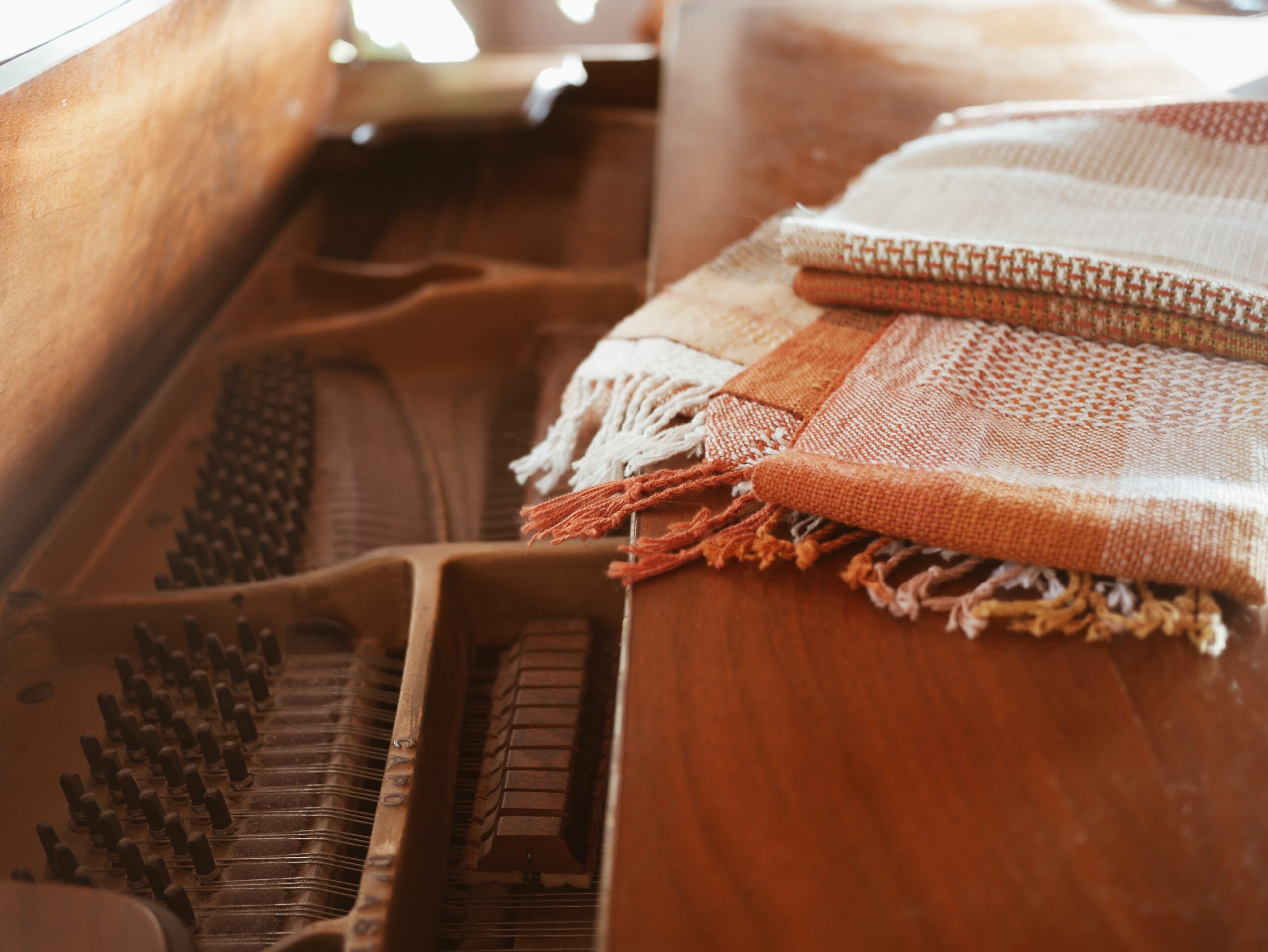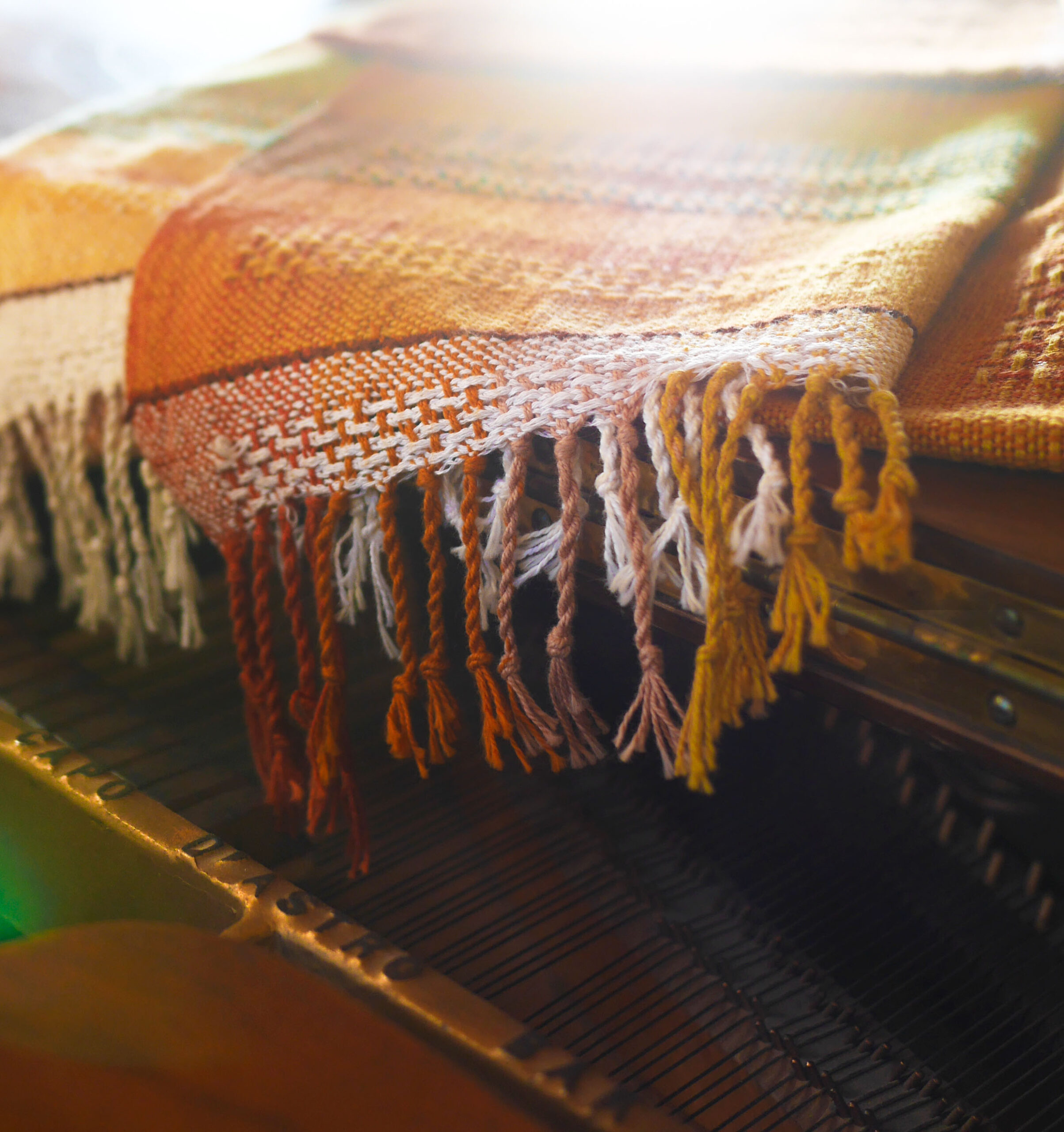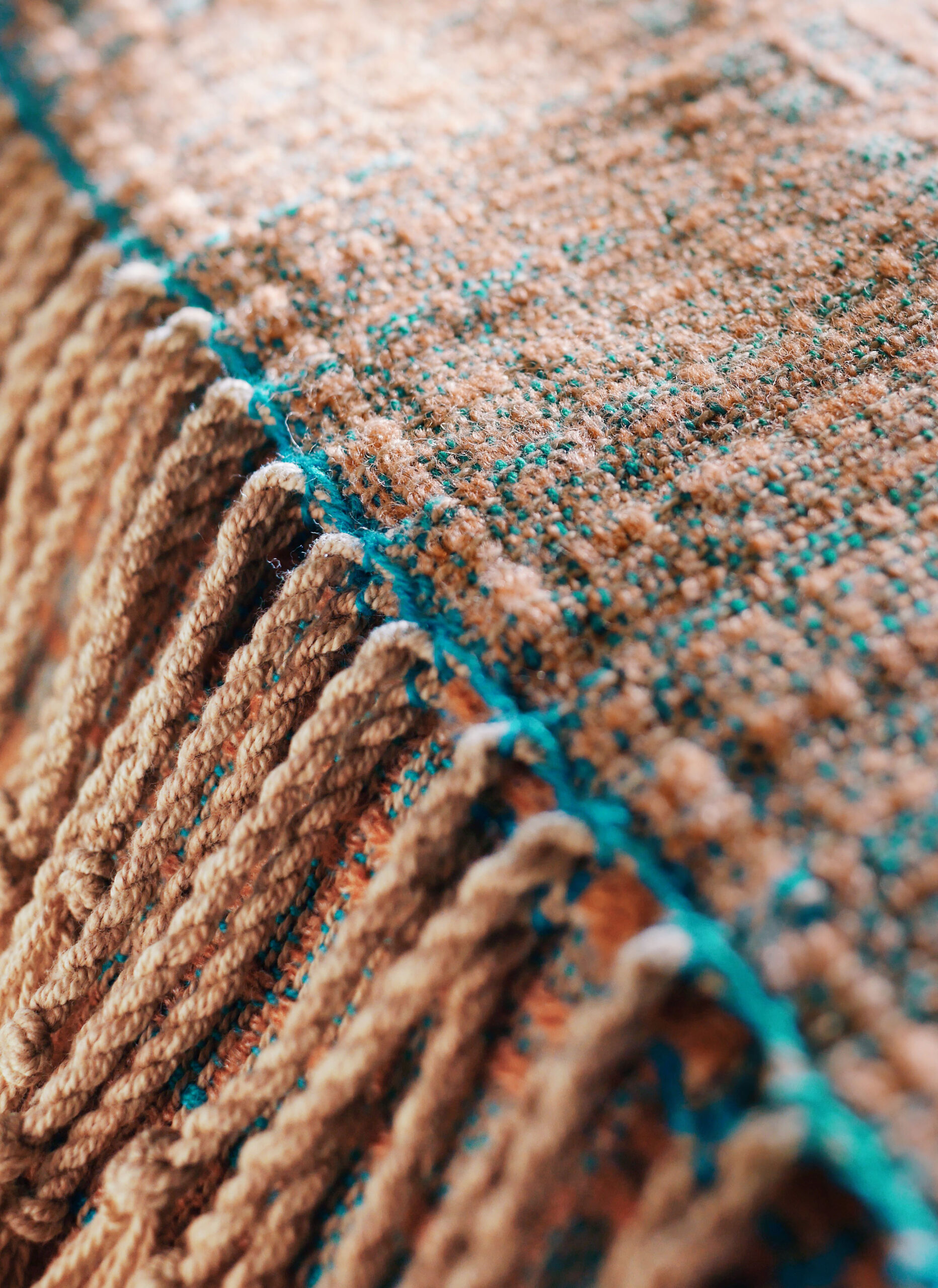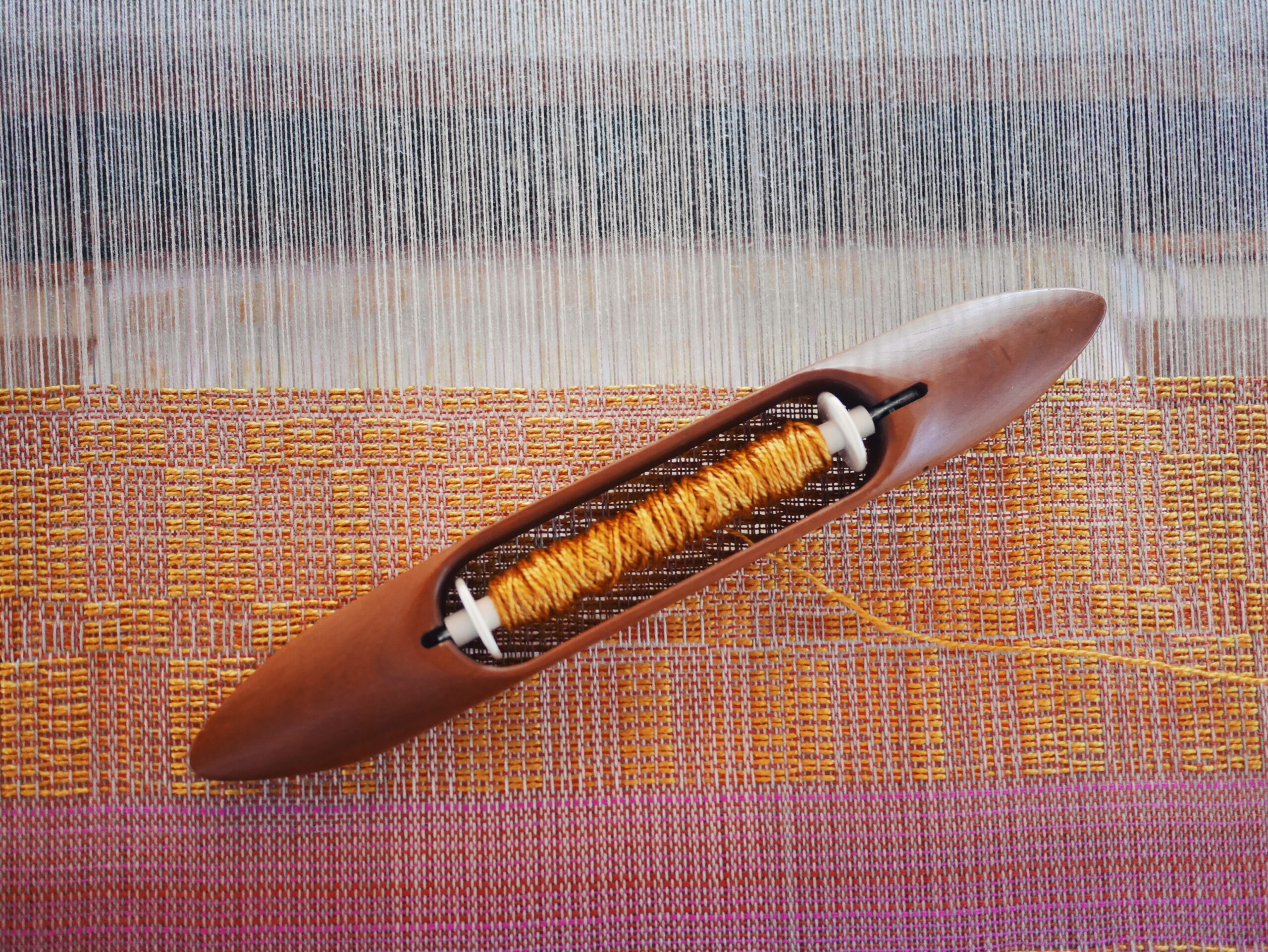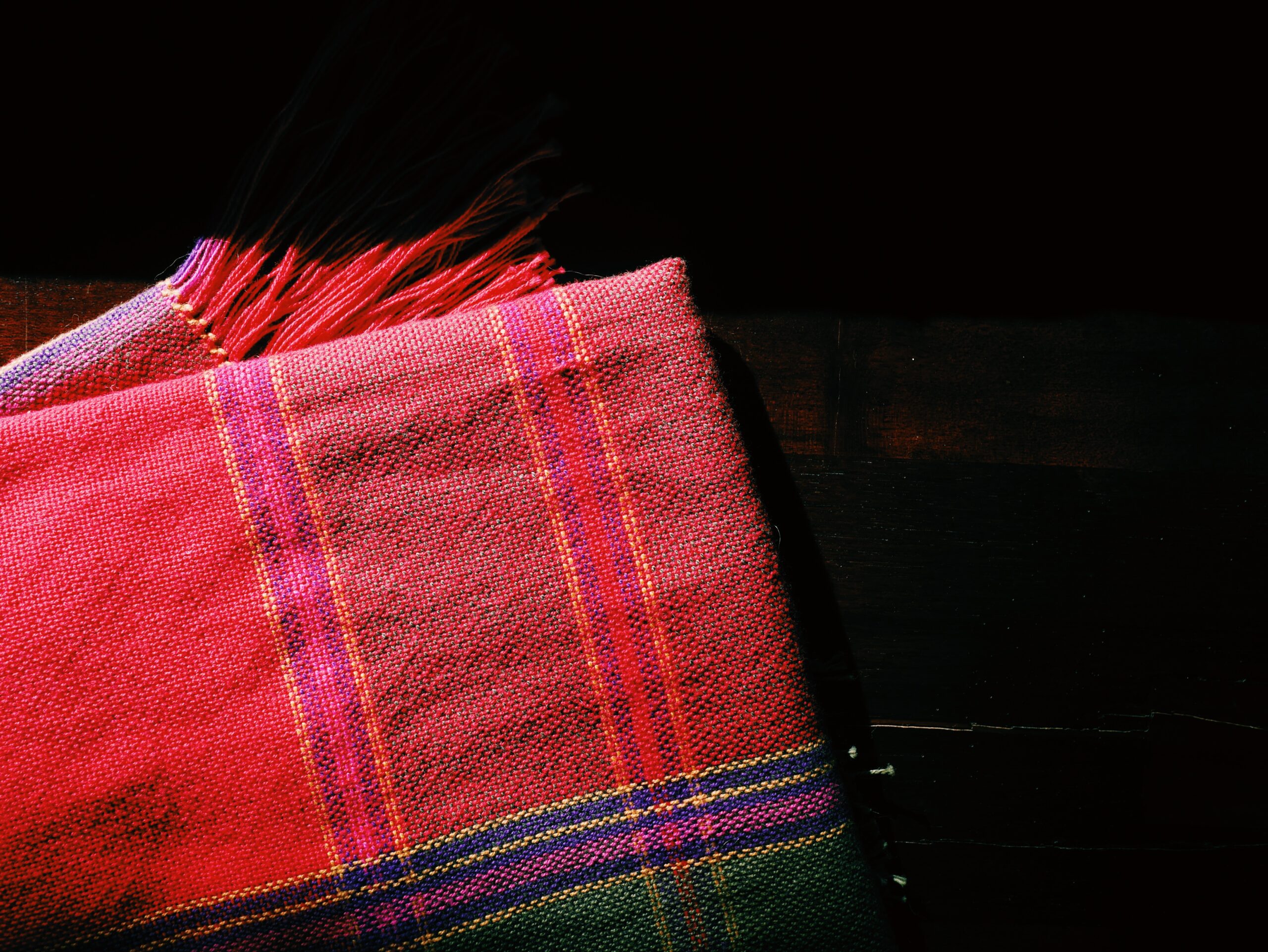
Earth
weaving a desert pallet
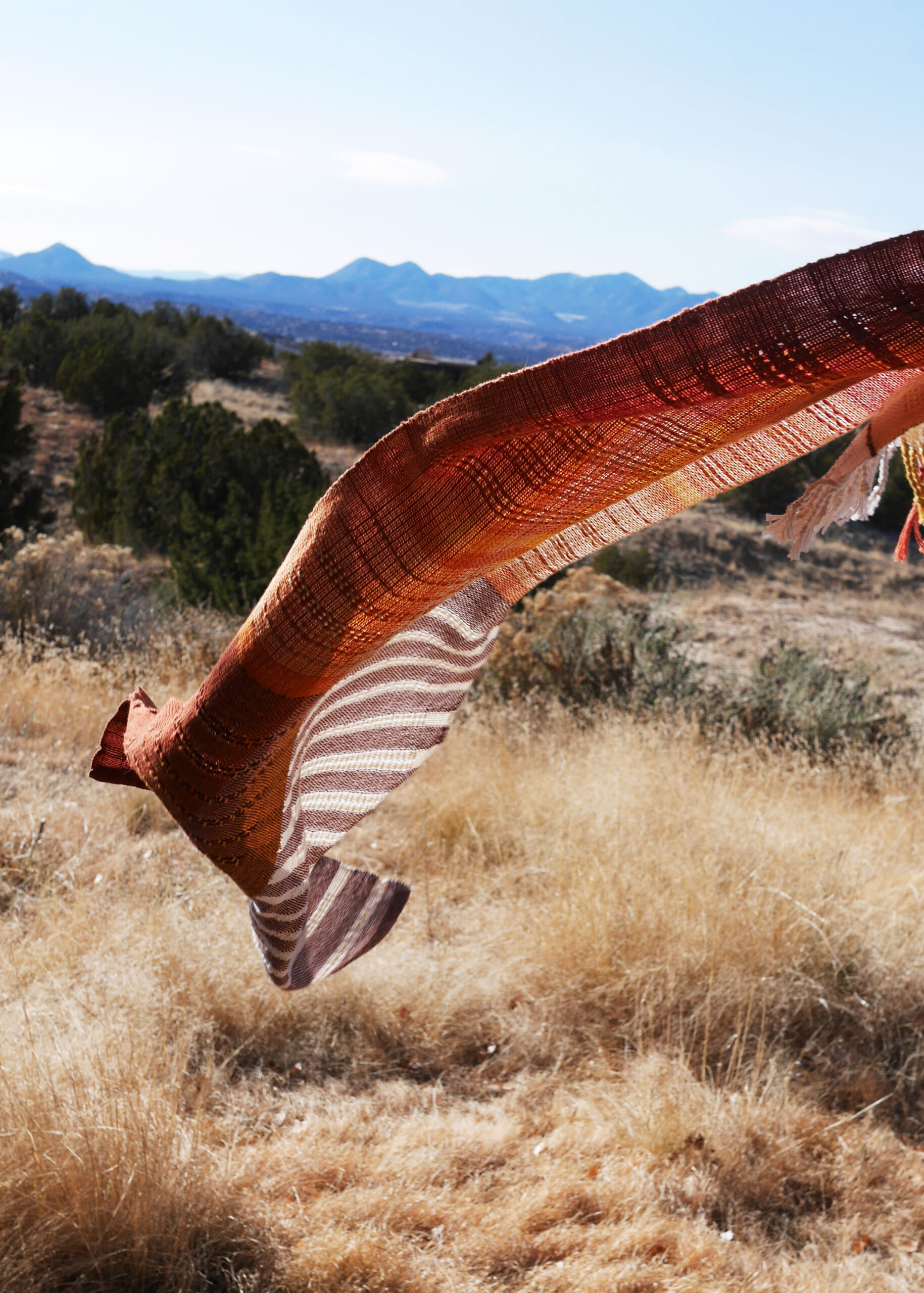 Adobe and Clay in Sunup, December 2022, cotton, lace
Adobe and Clay in Sunup, December 2022, cotton, lace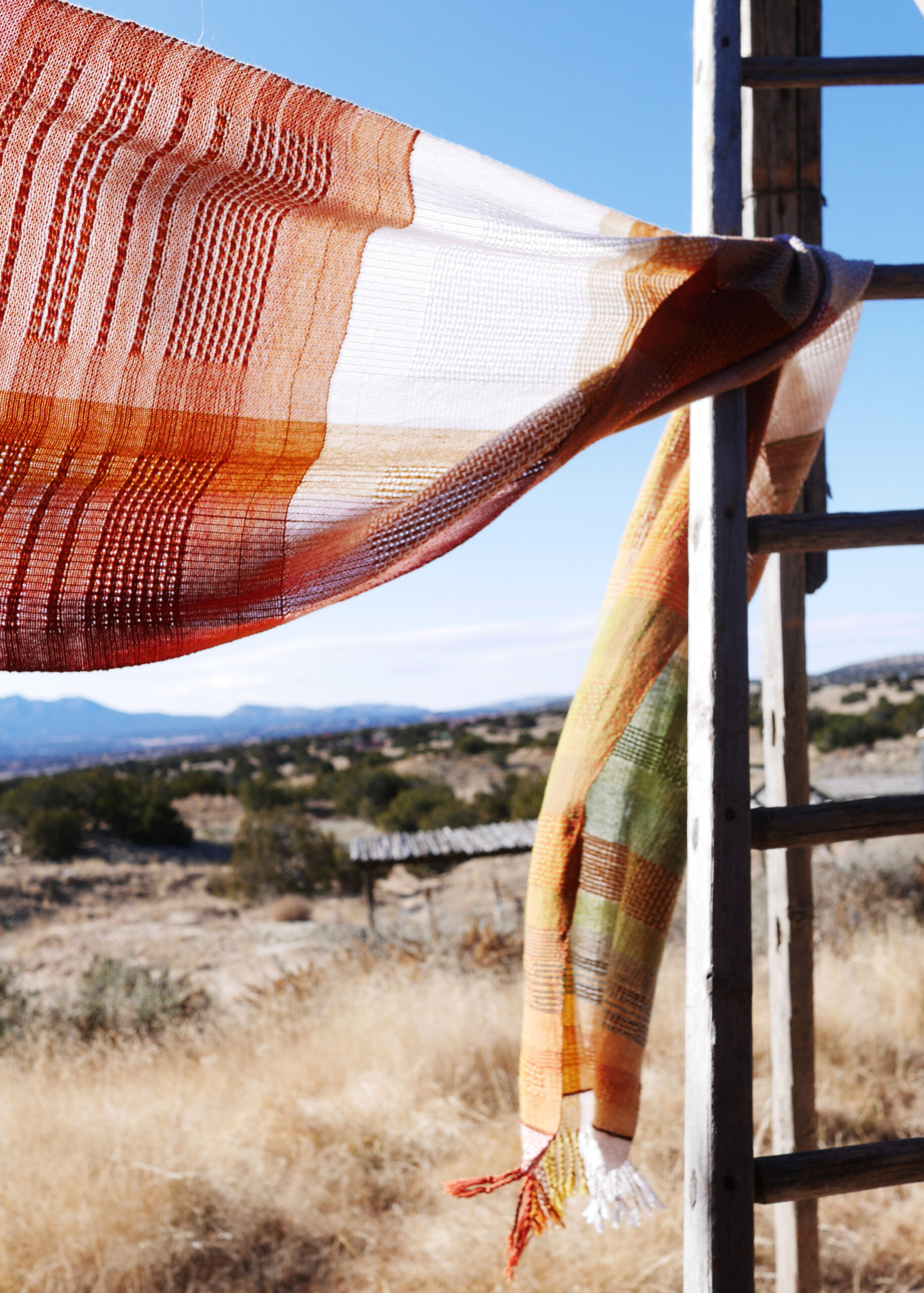 Adobe and Clay in Sunup, detail, December 2022, cotton, lace
Adobe and Clay in Sunup, detail, December 2022, cotton, laceMy loom sits in the window in a hand-built house, whose thick adobe walls are sealed with white plaster made from the earth outside. If I were a potter, I would throw pots from this soil, as generations have done. Nature and art comprise the ground underfoot: Anasazi black-and-white shards and early Puebloan glazeware. A careless hiker might fall through the friable layers into the ancient clay mine beneath.
Wood, pocked from eighty years in the river, was salvaged to build the cd cabinets which now serve to hold my threads. Choosing colours for the warp, I study the tinted land. In the distance, iron streaks the sandstone bluffs – yellows, oranges, reds – and, against the somber green juniper bushes and ashen sagebrush, florescent lichen paints the basalt hogback. On maps it is called the creston, but, through generations, the hogback has born many names in many languages. Early Tewa inhabitants of the Basin carved their signs up and down its vertical spine. There are spirals, sunbursts, kachinas, clouds, eagles, rain, the famous hump-backed flute player, and the all-important corn, a plant that cannot thrive without human cultivation, yet here in the Basin, self-seeds in the rock crevices, pushing up a few red ears each year.
As my gaze descends the arroyo, the earth changes texture and colour. The exposed strata, a chronology of rain and drought, volcanic eruptions and human habitation, are like lines laid down on a loom.
